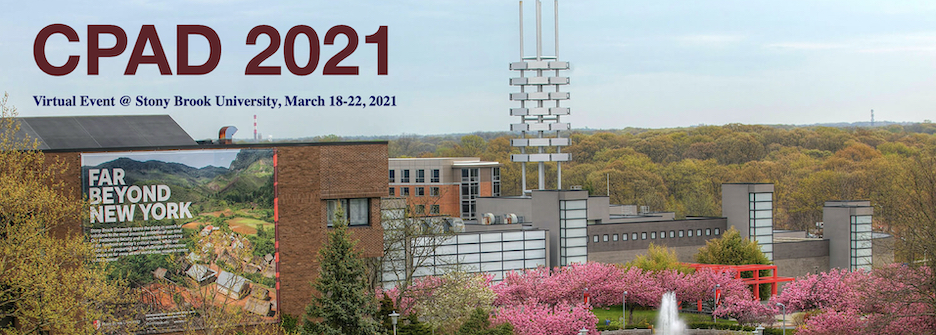Conveners
Early Career Plenary
- Gabriella Carini (Brookhaven National Laboratory)
The Scintillating Bubble Chamber (SBC) is a rapidly developing novel technique for 0.7 - 7 GeV nuclear recoil detection. Demonstrations in liquid xenon at the few-gram scale have confirmed that this technique combines the event-by-event energy resolution of a liquid-noble scintillation detector with the world-leading electron-recoil discrimination capability of the bubble chamber, and in fact...
The High Luminosity era of the Large Hadron Collider (LHC) starting in 2027 promises exciting discovery potential, giving unprecedented precision on key new physics models and characterization of the Higgs boson. In order to maintain current performance in this challenging environment, the ATLAS Liquid Argon electromagnetic calorimeter will get an entirely new readout that is fast enough to...
The CYGNO experiment aims at making use of the directionality of nuclear recoils produced in the sensitive volume of a gaseous TPC with optical readout to uniquely identify Dark Matter signals, whose direction would point to the Cygnus constellation.
As one of the steps towards the CYGNUS-TPC network of underground observatories for directional DM search at the ton scale, CYGNO collaboration...
The applications of neutron detection are growing also outside the particle physics community: radioactive waste management (RWM), radioactive portal monitoring (RPM), and imaging are some of the most active fields. Due to the shortage of $\mathrm{He^3}$, it is necessary to find reliable and effective alternatives. One of the most promising techniques is to use a Boron-coated gas detector: the...
Real-time detection of alpha-particles is an essential requirement for a variety of applications, such as in nuclear medicine, nonproliferation, and other security applications. We present a new imaging technique for alpha-particles using a fast optical camera focused on a thin scintillator. Detection of alpha-particles is based on their interaction in a thin layer of LYSO fast scintillator,...
The Belle II barrel region is instrumented with the Time of Propagation (TOP) particle identification system based on sixteen quartz radiator bars arranged around the interaction point. Due to the mechanical design of the TOP system these quartz bars do not overlap, but leave a gap of around 2cm between them. This leads to around 6% of all tracks in the nominal TOP acceptance region to escape...
The Haloscope at Yale Sensitive to Axion Cold dark matter (HAYSTAC) has now finished its first data collection run using quantum squeezed states to enhance the search for axions. The squeezed state receiver consists of two Josephson parametric amplifiers. The first squeezes vacuum noise, while the second amplifies a hypothetical axion signal against a background of squeezed noise. This...
VUV scintillation light detection in noble liquids is a hot topic in detector R&D given its wide range of applicability: from next generation of acceleration neutrino detectors to dark matters, to neutrino less double beta decay. In this talk, we present advancements in light detection R&D via coatings of thin semiconductive VUV sensitive films. With the proper choice of photoconductive...
The scintillator section of the CMS high granularity calorimeter (HGCAL) will be composed of the SiPM-on-tile technology, where the SiPM is located in a dimple machined into the scintillator tile surface. This design directly couples the light produced from a scintillator tile to an individual SiPM, which is crucial for calibrating the detector throughout its lifetime. We report the light...
3D ionization information facilitates unambiguous mm-scale fine-tracking in high occupancy liquid argon time-projection chamber (LArTPC) environments. LArPix-v2 incorporates low-power, low-noise 64-channel custom ASICs that can operate at cryogenic temperatures with a mixed-signal large-format printed circuit board for an unambiguous 3D charge-readout anode. With robust I/O and control...
